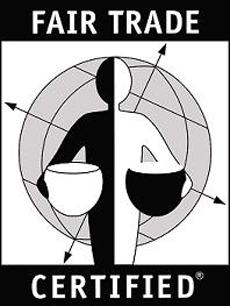TIP OF THE DAY: Learn About Fair Trade
| October is Fair Trade Month. If you don’t know about Fair Trade, it’s important enough to devote a minute to read this.
Small family farmers in developing-world countries grow much of the world’s cacao, coffee, tea, fruits and vegetables, cotton, flowers, ingredients for beauty products—more than 3,000 products in all. The vast majority of family farmers must take whatever brokers or other buyers offer for their crops, which can be less than market price and less than what it costs the farmer to grow them. Conventional trade practices traditionally discriminate against these poorest farmers. Fair Trade policies address these injustices. Fair Trade establishes practices that provide these farmers with fair terms of trade: fair prices—so they can make a small profit and send their children to school—decent working conditions and local sustainability. |

Fair Trade Certified, the logo of Transfair, |
|
| Manufactured products that sport a Fair Trade logo participate in these fair practices, enabling poor farmers to improve their financial position and send their children to school (instead of needing them as farm laborers). There are several global Fair Trade certifying organizations, the logos of which ensure that standards have been met, including Fair Trade Federation, Fairtrade Foundation, Fairtrade Labelling Organisations International (FLO), Transfair and The World Fair Trade Organization.
When you’re making a choice at the retail shelf and see a Fair Trade logo, think of the good that you’ll do by purchasing that brand.
|
||


